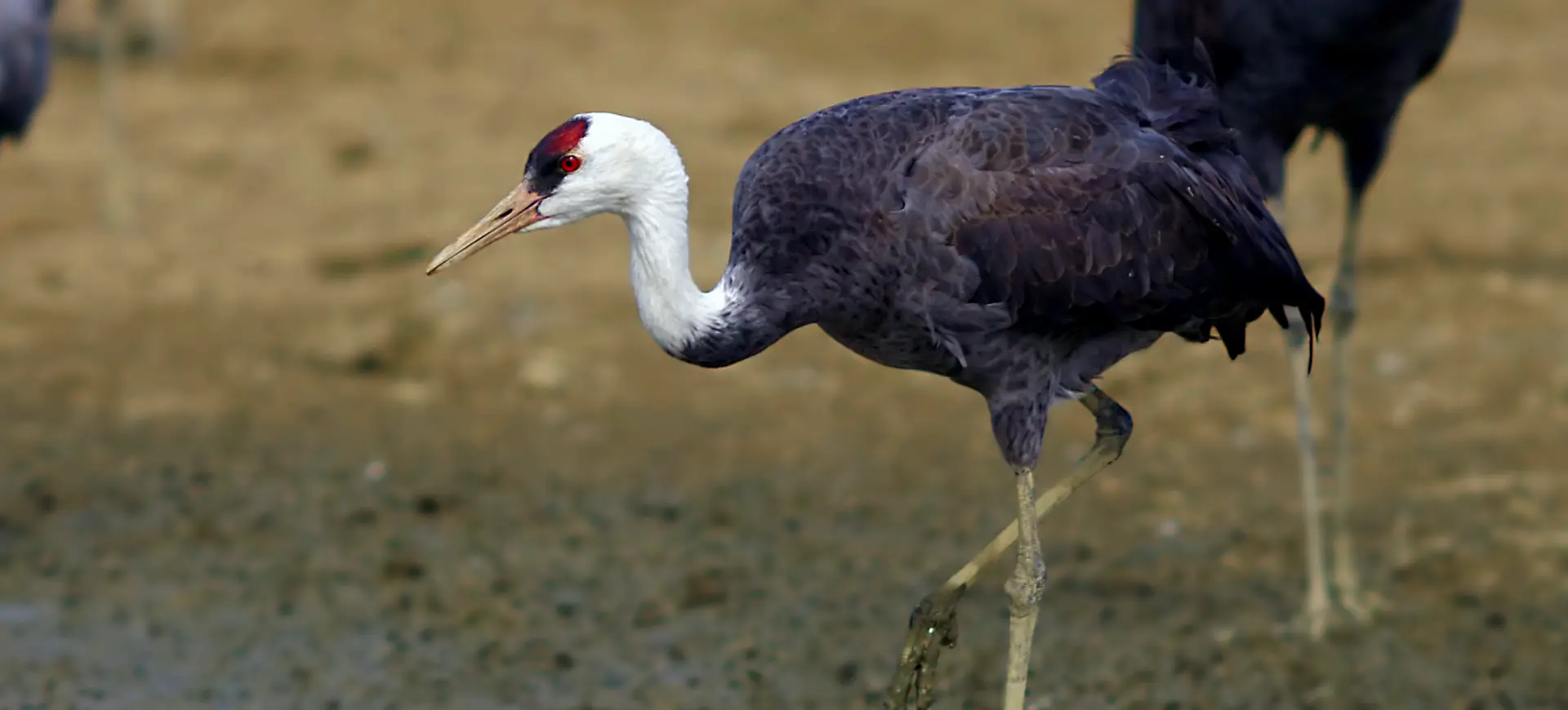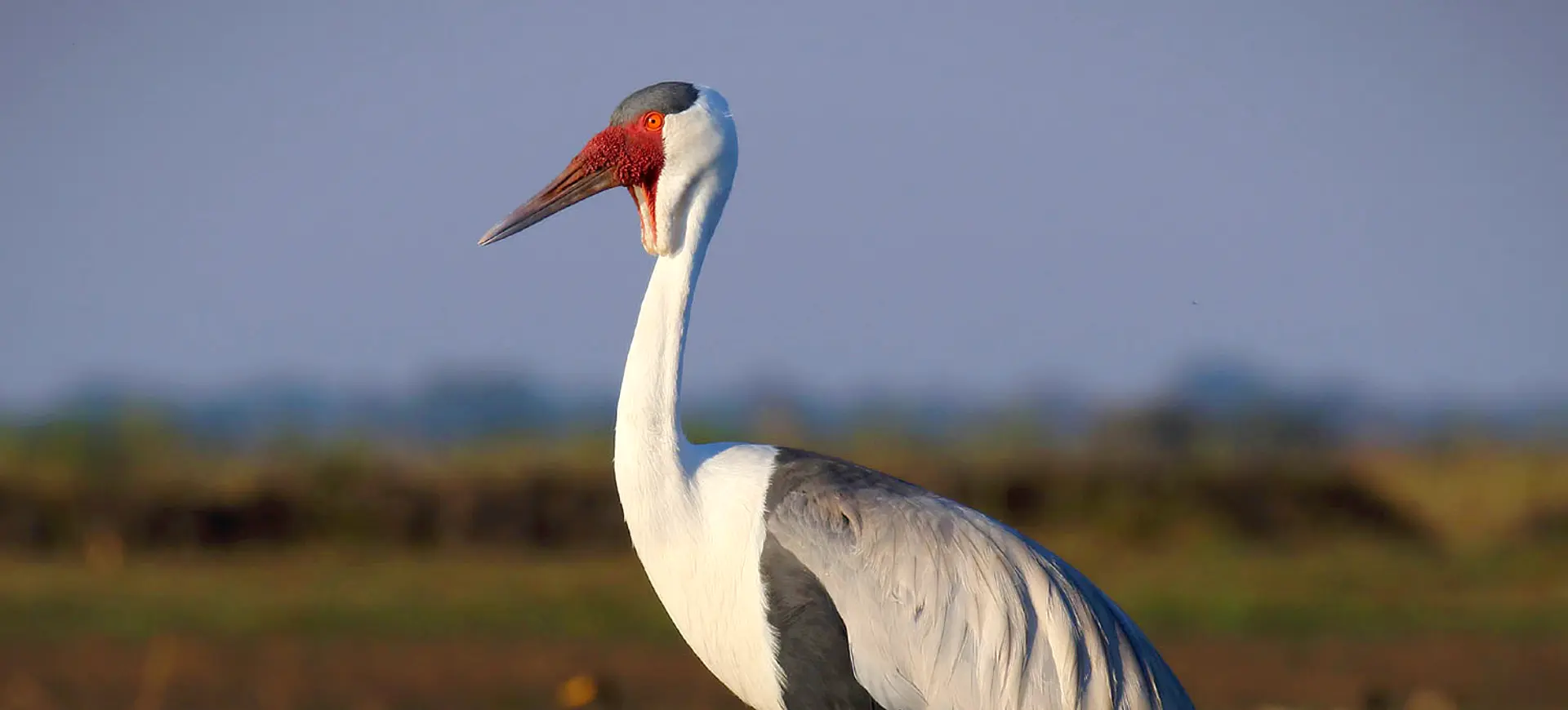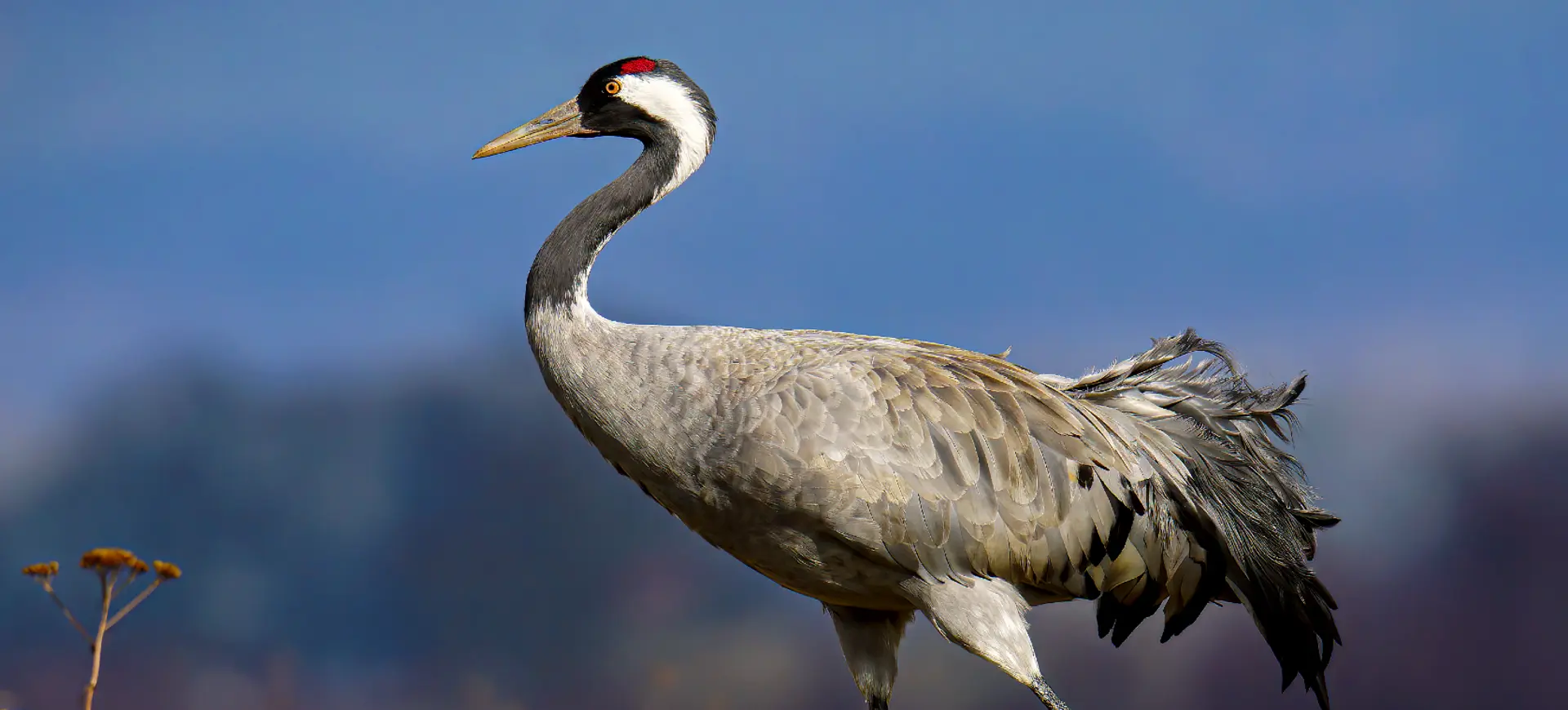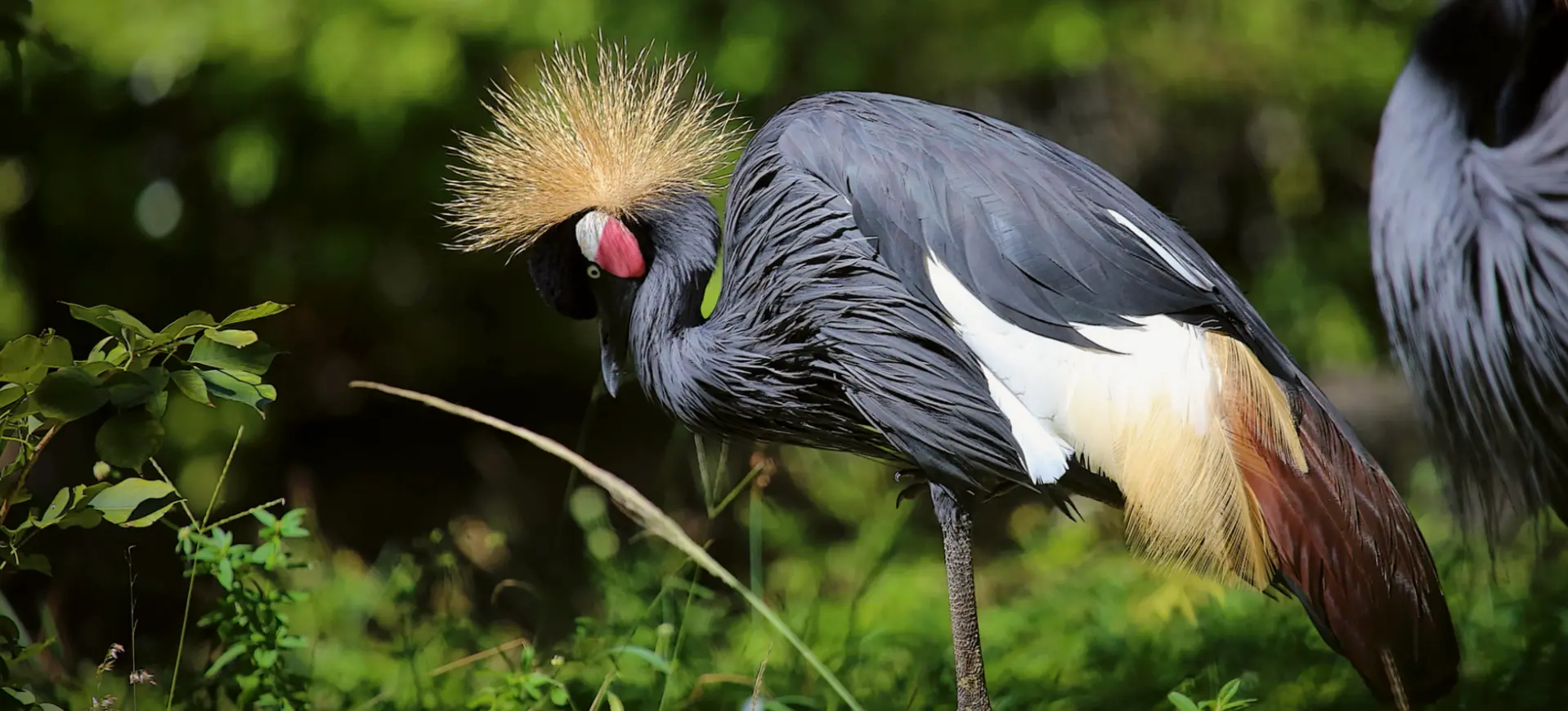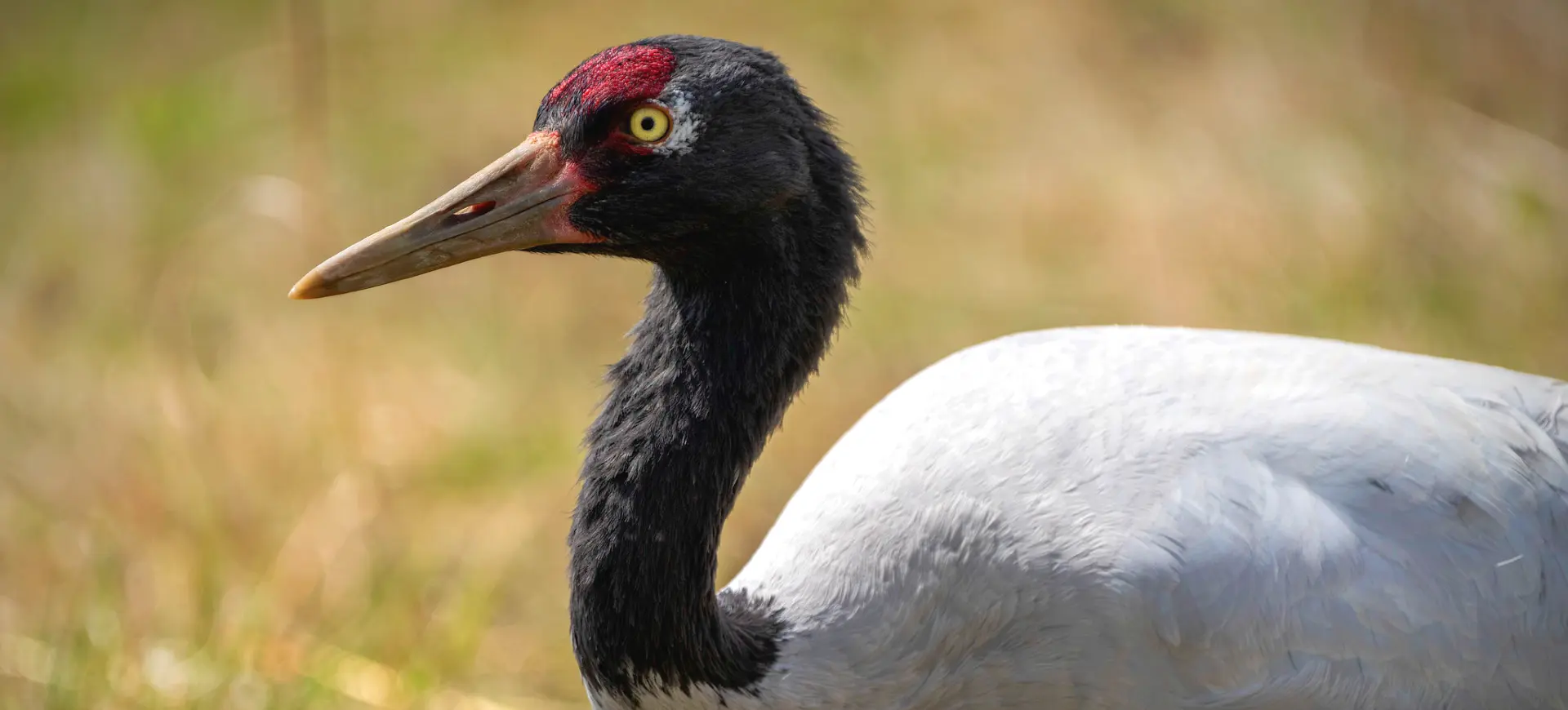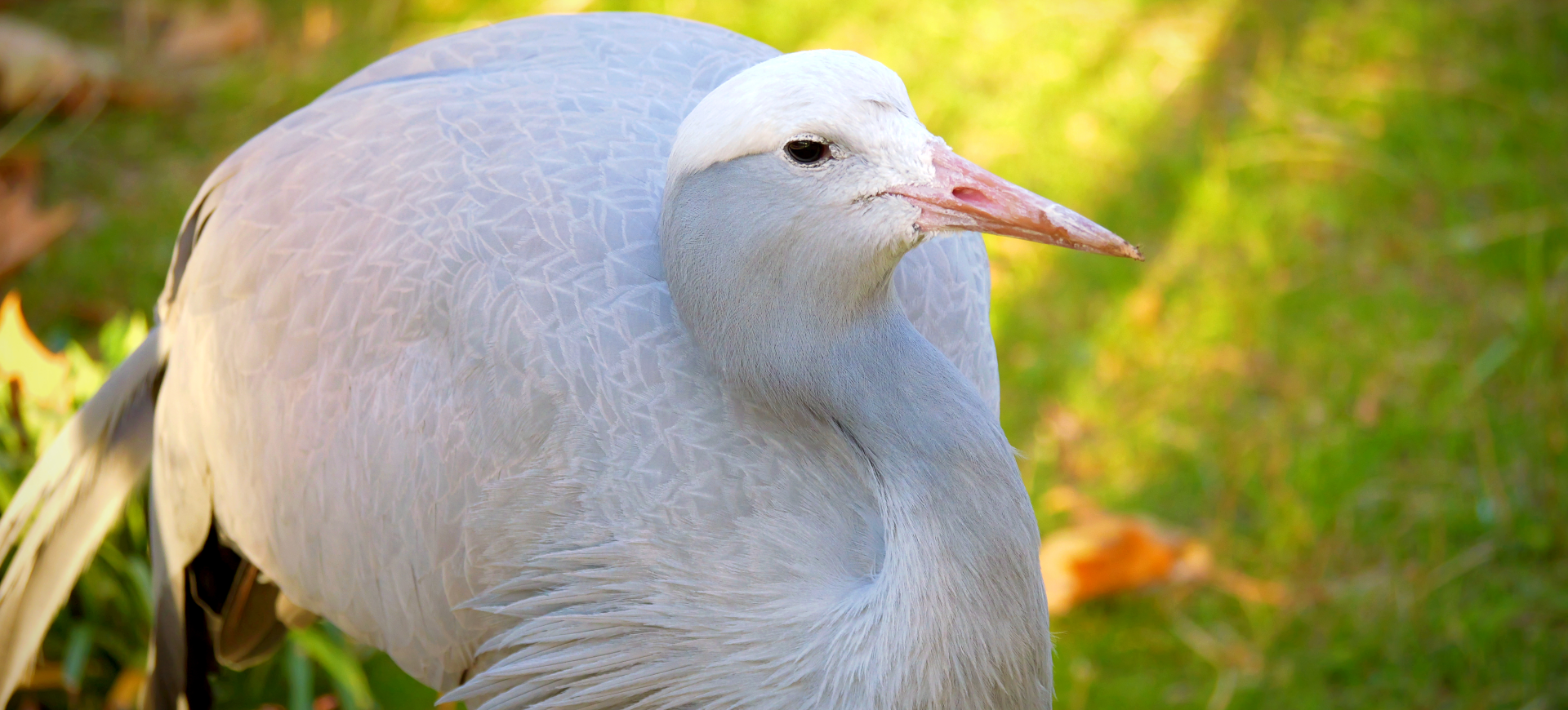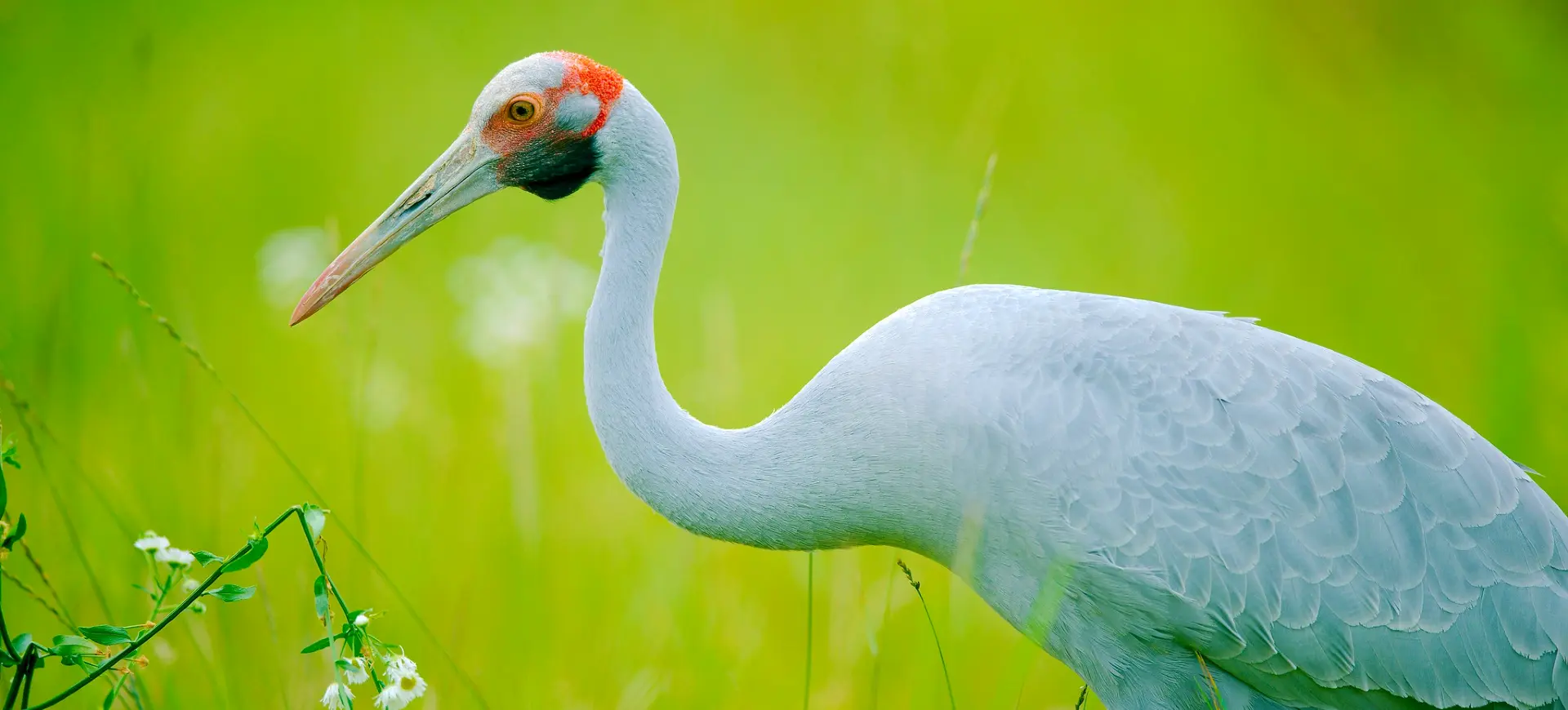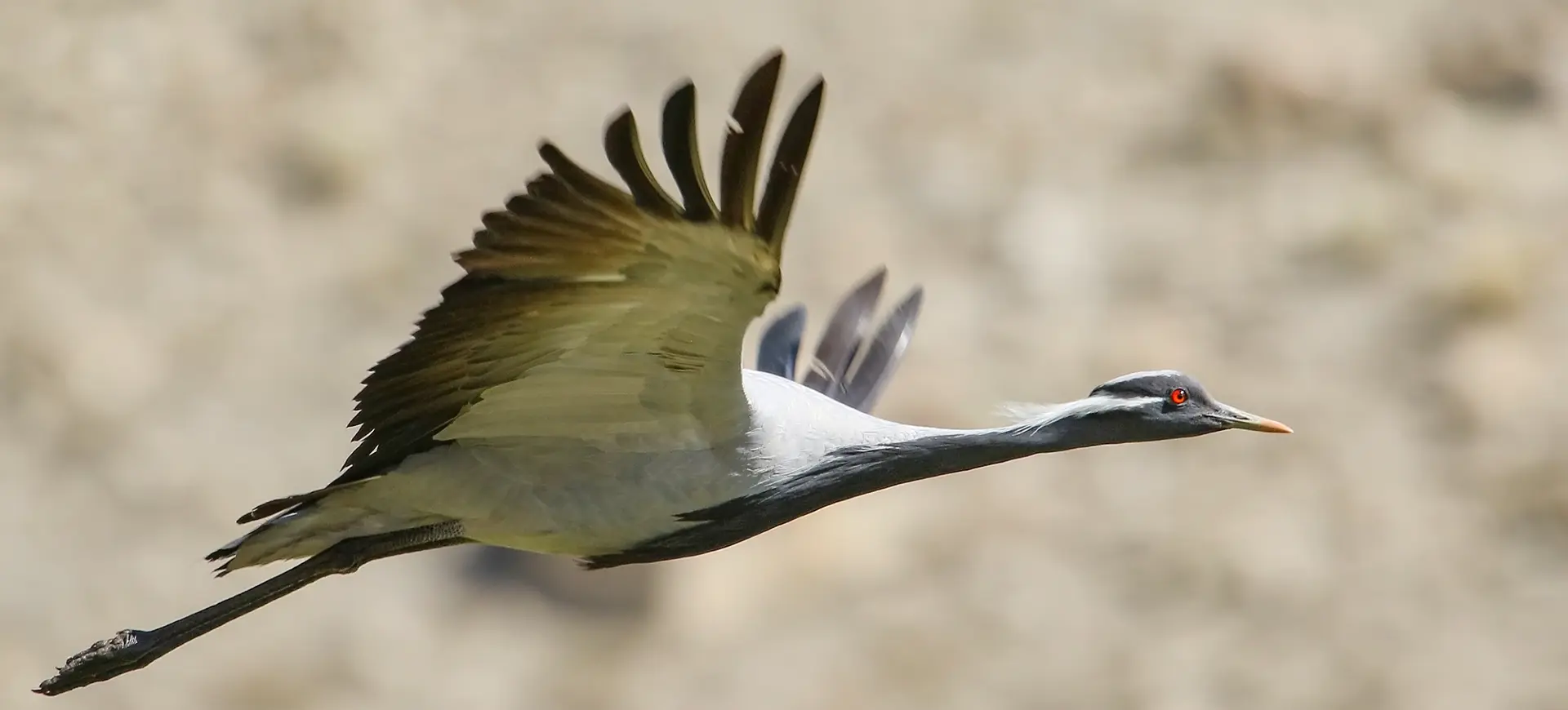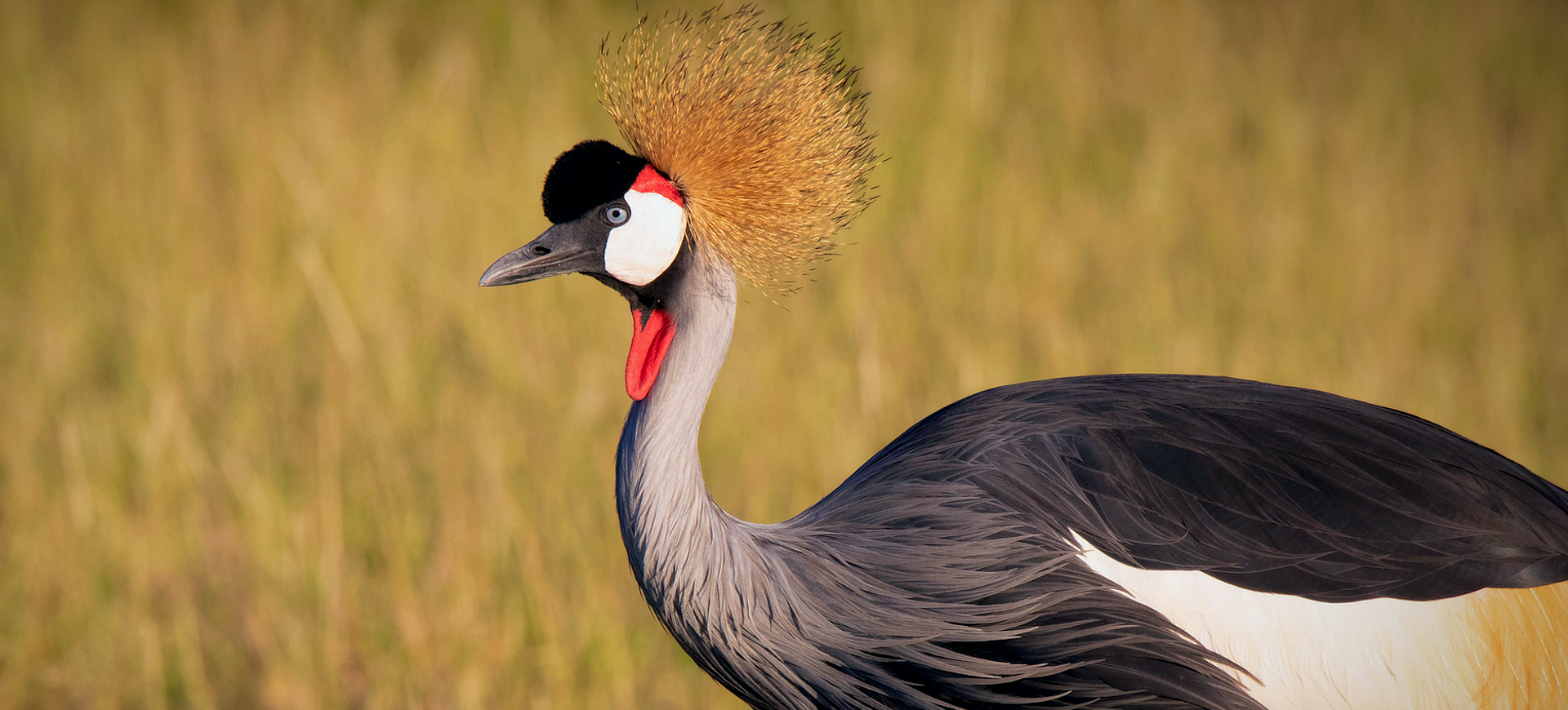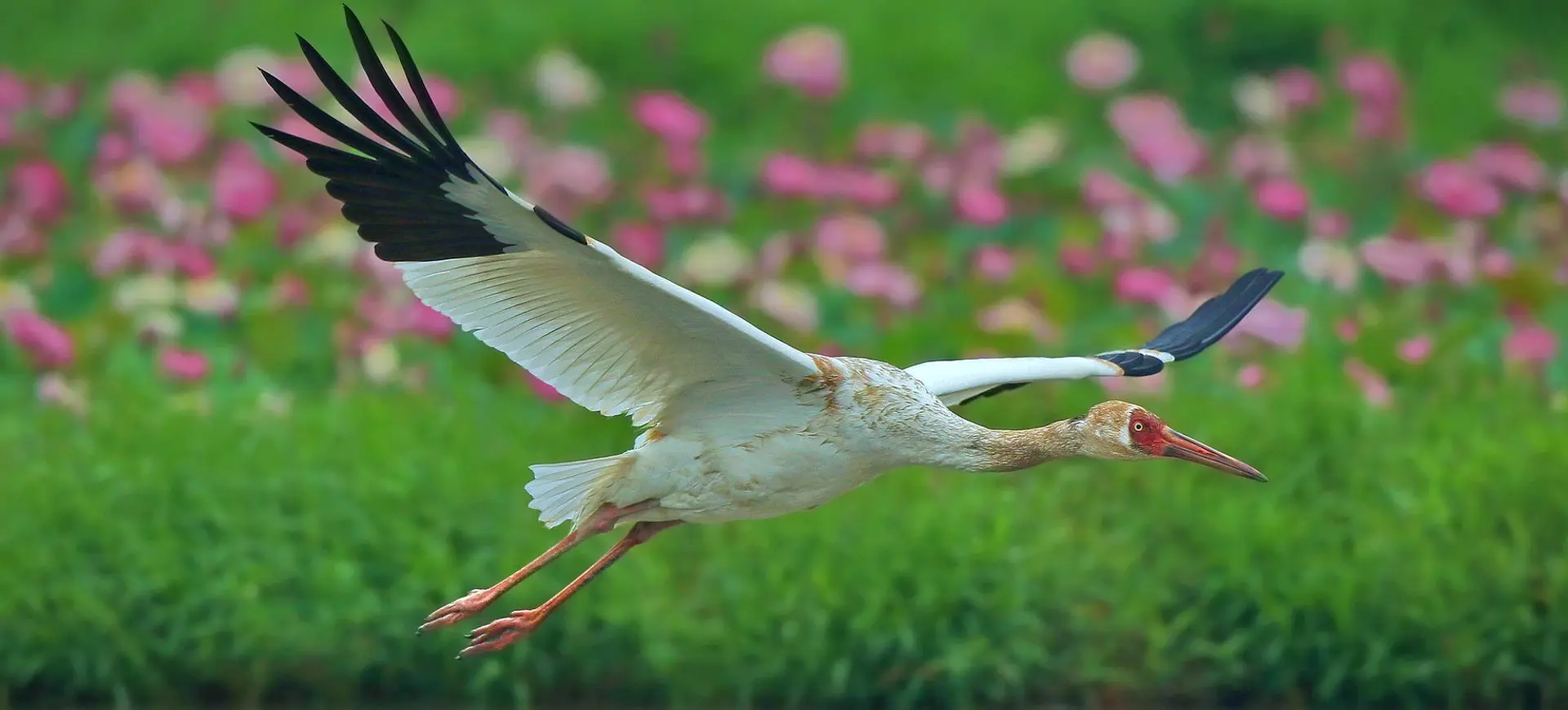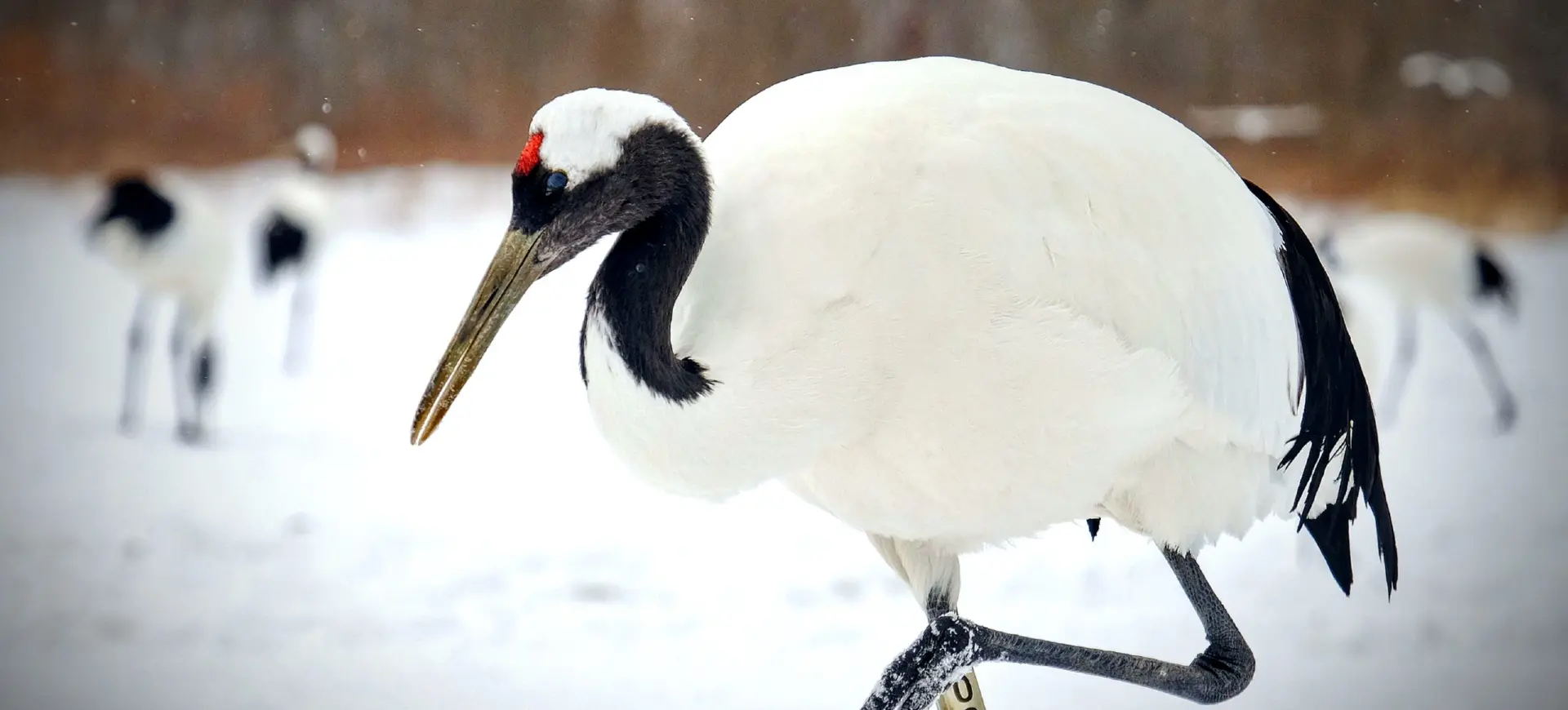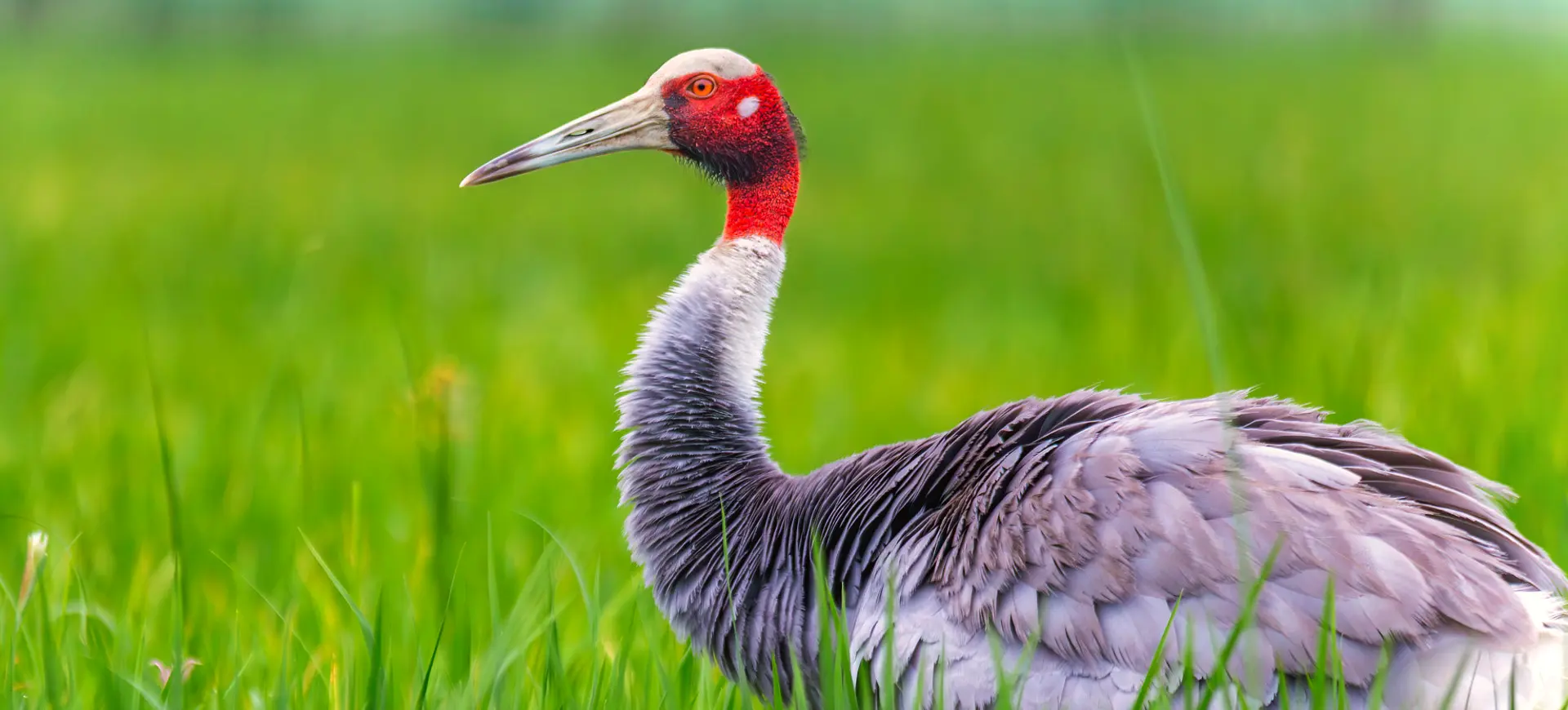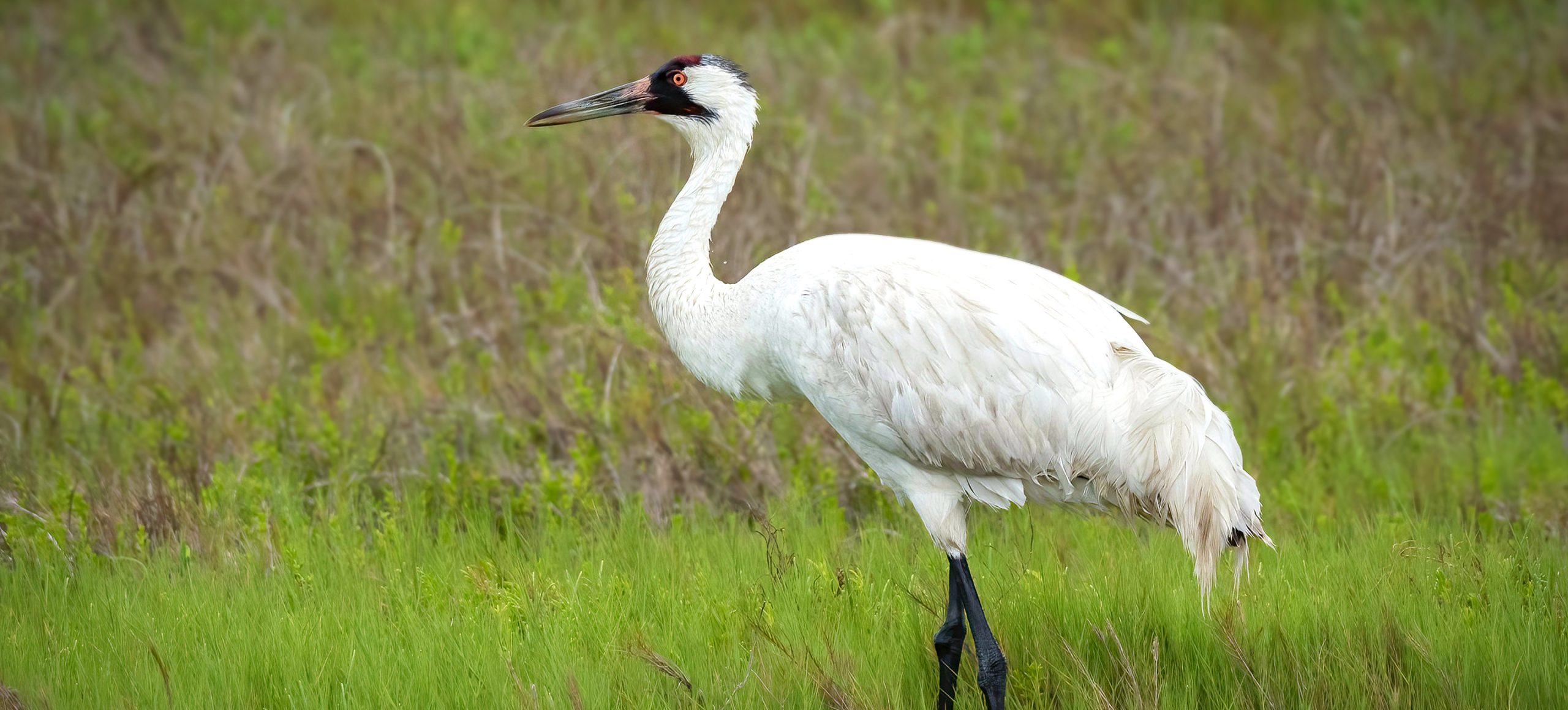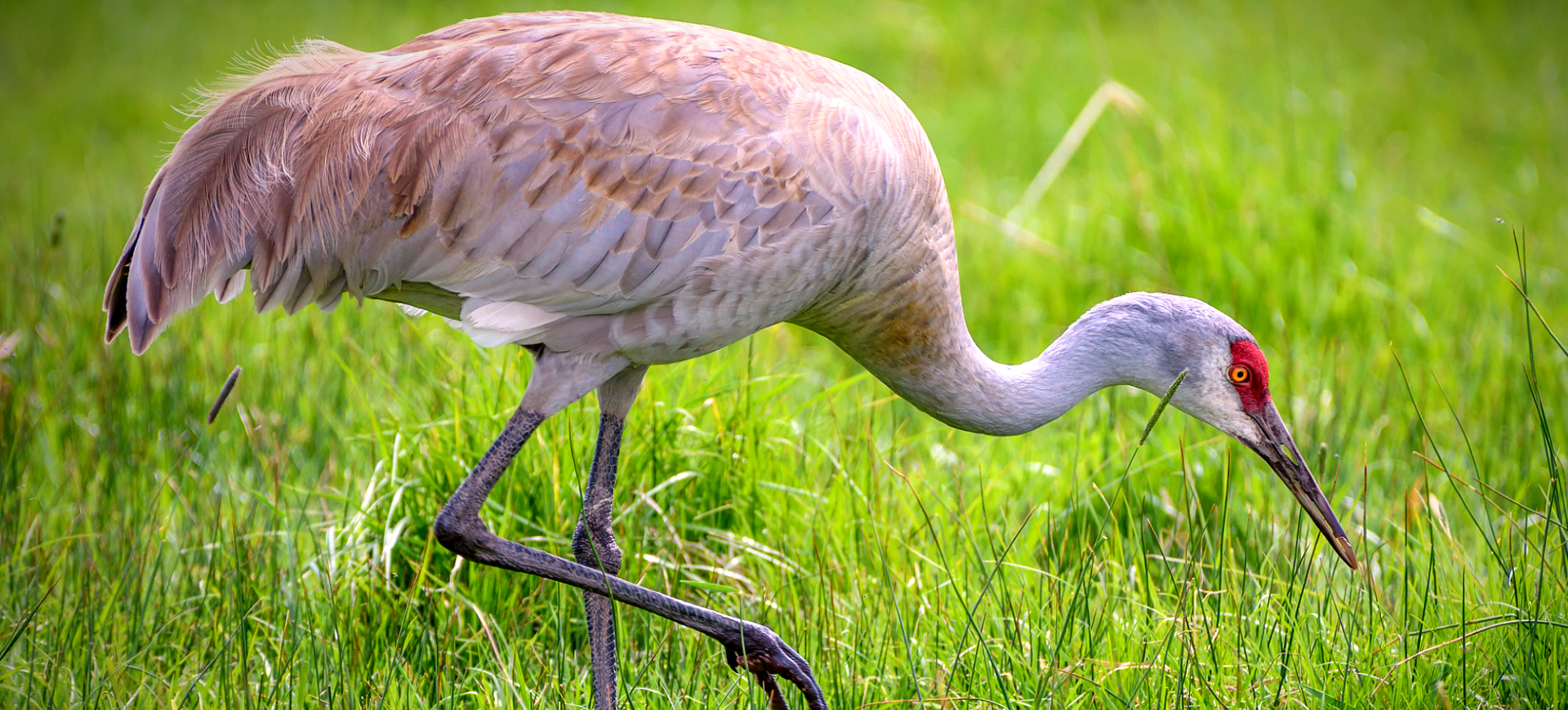Overview
The White-naped Crane (Grus vipio) is a large bird distinguished by its striking appearance and elegant demeanor. With a height reaching up to 130 cm (51 inches) and a wingspan of about 200 cm (79 inches), these cranes are notable for their ash-gray body, white nape, and a vibrant red patch of bare skin around the eyes. The species exhibits a unique grace, particularly during their courtship dance, which involves intricate steps, jumps, and calls. White-naped Cranes inhabit various wetland environments, including marshes, reed beds, and riverbanks, where they feed on plants, seeds, and small animals.
Native to East Asia, the White-naped Crane breeds in northeastern Mongolia, northeastern China, and parts of Russia, migrating to the Korean Peninsula, Japan, and central China for winter. They are known for their long migratory journeys, navigating vast distances between breeding and wintering grounds. The conservation of White-naped Cranes involves international cooperation to preserve critical wetland habitats along their migratory routes. Despite facing habitat loss and degradation threats, efforts to protect key areas have been pivotal in maintaining stable populations in some regions.
The social structure of White-naped Cranes is complex, with pairs forming long-term bonds essential for successful breeding. These cranes are also known for their loud, trumpeting calls, which serve as communication within the flock, especially during migration and breeding seasons. Their presence in wetlands indicates healthy ecosystems, making them important species for biodiversity conservation. Efforts to protect White-naped Cranes contribute to the broader goal of wetland conservation, supporting numerous other species that depend on these habitats.
Taxonomy
Kingdom
Phylum
Class
Order
Family
Genus
Species
Type
Physical Description:
White-naped Cranes are characterized by their elegant stature and distinctive coloring. Adults display a predominantly grey plumage, contrasting with the white nape and red facial patch. Juveniles have a duller appearance with less pronounced red patches. The slender body, long legs, and neck of the White-naped Crane are adaptations to their wetland habitats, allowing them to wade through shallow waters in search of food. Their powerful wings facilitate long-distance migration, a critical aspect of their life cycle.
The bill of the White-naped Crane is sharp and pointed, designed for foraging in mud and vegetation. Their large eyes provide excellent vision, aiding in detecting predators and prey. During the breeding season, the plumage of both males and females becomes more vibrant, playing a role in courtship displays and mate selection. The physical attributes of White-naped Cranes, including their striking appearance and adaptations for survival in wetlands, make them a subject of interest and admiration.

Lifespan: Wild: ~25 Years || Captivity: ~60 Years

Weight: Male & Female: 5.5-12 lbs (2.5-5.5 kg)

Height: Male & Female: 44-51 inches (112-130 cm)

Wingspan: Male & Female: 78-87 inches (200-220 cm)
Characteristic:
Native Habitat:
White-naped Cranes are native to the wetlands of East Asia, relying on various freshwater habitats for breeding, feeding, and nesting. Their breeding grounds are primarily in the marshes and wet meadows of northeastern Mongolia, northeastern China, and southeastern Russia. These areas provide the necessary conditions for nesting and rearing chicks, including abundant food and protection from predators.
The wintering habitats of White-naped Cranes include coastal and inland wetlands in the Korean Peninsula, Japan, and central China. These areas offer suitable feeding grounds and milder climates, allowing the cranes to survive the colder months. The preservation of wetland habitats across their migratory range is crucial for the survival of White-naped Cranes, requiring international collaboration and effective conservation policies.
Climate Zones:
Biomes:
Biogeographical Realms:
Continents:
Countries:
Diet:
Diet & Feeding Habits:
White-naped Cranes are omnivores whose diet includes a variety of plants, seeds, insects, and small vertebrates such as fish and amphibians. They forage in shallow waters and mudflats, using their bills to probe for food. During the breeding season, their diet shifts to include more protein-rich foods, which is essential for egg production and the growth of chicks. They may also feed on agricultural crops in wintering areas, leading to conflicts with farmers.
The feeding behavior of White-naped Cranes is adapted to their migratory lifestyle, with the birds taking advantage of seasonal food abundance. Conservation efforts for White-naped Cranes include habitat management to ensure the availability of food sources along migratory routes and in breeding and wintering areas. Sustainable agriculture practices and the creation of feeding sites are part of these conservation strategies, aiming to reduce human-wildlife conflicts and support the cranes’ nutritional needs.
Mating Behavior:
Mating Description:
White-naped Cranes form monogamous pairs often maintained for life, with both partners participating in nest building, incubation, and chick rearing. Their elaborate courtship rituals include synchronized dancing, vocal duets, and displays of affection, which strengthen pair bonds and establish breeding territories. Nesting typically occurs in secluded wetland areas, where the female lays 1-2 eggs each breeding season.
The incubation period lasts about 29-34 days, with both parents sharing incubation duties. Chicks are precocial, relatively mature and mobile shortly after hatching. Parental care is extensive, with both male and female cranes protecting and feeding their chicks until they fledge. The reproductive success of White-naped Cranes is closely linked to the availability of suitable nesting sites and adequate food resources, highlighting the importance of habitat conservation.
Reproduction Season:
Birth Type:
Pregnancy Duration:
Female Name:
Male Name:
Baby Name:
Social Structure Description:
White-naped Cranes are highly social birds, forming close-knit family groups and larger flocks, especially during migration and wintering periods. Their social interactions, including complex courtship dances, vocal communications, and cooperative feeding behaviors, are crucial to their survival and reproductive success. In breeding territories, pairs defend their nests and surrounding areas from intruders, demonstrating strong territorial instincts.
The formation of large flocks during migration provides safety in numbers, reducing the risk of predation and increasing the efficiency of finding food. The social structure of White-naped Cranes facilitates information sharing, such as the location of feeding sites and safe resting areas. Understanding and preserving White-naped Cranes’ social dynamics are essential to their conservation, ensuring that these majestic birds continue to thrive in their natural habitats.
Groups:
Conservation Status:
Population Trend:
The global population of White-naped Cranes is estimated at 5,000-6,000 individuals, and numbers are experiencing a gradual decline due to habitat loss, degradation, and human-wildlife conflicts. The species face significant threats from agricultural expansion, wetland drainage, and pollution, which impact their breeding and wintering habitats. Conservation initiatives are focused on habitat protection, restoration, and sustainable land use practices to mitigate these threats.
Monitoring and protecting White-naped Cranes involves tracking migratory patterns, breeding success, and population dynamics. Protected areas and wildlife reserves are critical in providing safe breeding and wintering sites for the cranes. Community engagement and education are also essential for fostering coexistence between humans and cranes, particularly in areas where agricultural activities overlap with crane habitats. International cooperation and funding are crucial for the long-term conservation of White-naped Cranes, supporting initiatives that preserve the ecological integrity of their habitats.
Population Threats:
White-naped Cranes face numerous threats across their range, including habitat loss due to agricultural expansion, urban development, and wetland drainage. Pollution from agricultural runoff and industrial activities further degrades their habitats, affecting the quality of their breeding and feeding areas. Climate change poses an additional threat, potentially altering wetland ecosystems and impacting crane populations.
Human-wildlife conflicts arise in areas where White-naped Cranes feed on crops, leading to negative perceptions and retaliatory actions from farmers. Infrastructure construction, such as roads and dams, also contributes to habitat fragmentation, disrupting migratory routes and access to critical sites. Addressing these threats requires integrated conservation strategies that balance human needs with protecting White-naped Cranes and their habitats.
Conservation Efforts:
White-naped Cranes’ conservation efforts focus on habitat protection, restoration, and sustainable management practices. International collaboration is key to conserving the species, with agreements and partnerships facilitating the protection of critical wetland habitats. Conservation organizations work with governments, local communities, and farmers to implement practices that benefit cranes and people, such as creating crane-friendly agricultural zones.
Research and monitoring programs provide valuable data on crane populations, health, and habitat use, informing conservation strategies and actions. Public awareness campaigns and educational initiatives raise the profile of White-naped Cranes, promoting their protection and the importance of wetland conservation. Efforts to rehabilitate and release captive-bred cranes into the wild also contribute to population recovery, alongside measures to mitigate human-wildlife conflicts and ensure the species’ long-term survival.
Additional Resources:
Fun Facts
- White-naped Cranes are known for their loud, trumpeting calls, which can be heard over long distances and play a crucial role in communication within flocks.
- They are one of the few crane species that can thrive in fresh and saltwater habitats, demonstrating remarkable adaptability.
- The White-naped Crane’s courtship dance is a complex and beautiful display involving synchronized movements, jumps, and calls. It strengthens pair bonds and attracts mates.
- These cranes can fly thousands of kilometers during migratory journeys, crossing national borders and diverse landscapes.
- White-naped Cranes have been featured in Asian art and mythology, symbolizing luck, longevity, and fidelity, reflecting their cultural significance across the region.
- In traditional Korean culture, White-naped Cranes are symbols of purity, peace, and longevity, often appearing in paintings and literature.
- They are among the few species of cranes that can coexist near human activities, adapting to modified landscapes while requiring conservation efforts to ensure their survival.
- The diet of White-naped Cranes can vary significantly between seasons and regions, showcasing their ability to adapt to available food sources, from wetland plants and seeds to small vertebrates and invertebrates.
- Conservation programs for White-naped Cranes sometimes involve artificial feeding sites, especially in wintering areas, to prevent crop raiding and mitigate human-wildlife conflicts.
- White-naped Cranes are known to form strong, lifelong pair bonds with their mates, a rarity in the animal kingdom, which adds to their mystique and the human fascination with them.









